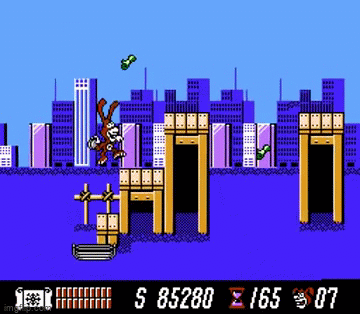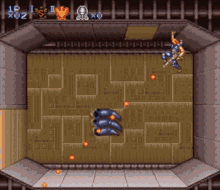Taxonomy of Virtual Spaces Part II
Over the summer of 2024, I returning to my prototype digital project to explore the planar geometric projection options that I concluded last summer, named for my Taxonomy of Digital Spaces framework and vocabulary for analyzing the different visuo-spatial configurations of virtual spaces (spatial paradigms) in digital games.
 |
| Link to itch.io prototype build that is playable in browser. |
The prototype build simulates the "Filmation" spatial paradigm featured in many popular computer games in the UK in the 1980s, 1990s, and is having something of a resurgence today. The game's projection method can be changed on the fly by pressing the "T" key.
This year's goal is to incorporate spatial paradigms seen in side scrolling platformers, run-n-gun games, and other influential game genres. These stylistic differences in game graphics can change a player's sense of space as they navigate their avatar through a virtual world.
Take Super Mario Bros. as an example. The graphical presentation is very flat, with every game object and environment tile rendered in an orthographic projection. The virtual space has very little sense of depth and Mario's feet land on the top edge of a ground tile.
| Super Mario Bros. (Nintendo, 1985) |
However, surviving design documentation shows that SMB creators had a vertical orthogonal (sometimes called vertical oblique) projection method in mind for the environment. This allows the player to see the top surface of the ground plane as well as give a side view of the ground tiles. Mario's feet would land in the middle of a ground surface tile.
 |
| Super Mario Bros. design document. |
This design document illustration is similar to the spatial paradigm seen in Yo! Noid, where the Noid's feet land near the middle of the ground surface tiles. The receding lines of the ground surface are rendered vertically in parallel on the screen. This appears to give slightly more of a sense of depth than SMB, but still feels fairly flat to me.
 |
| Yo! Noid (Capcom, 1990) |
Compare this to Super C with its elevation oblique projection of its environment in the platformer-like stages. The receding lines of the ground plane tiles are rendered in parallel at an oblique angle instead of vertical lines. This technique is also used into the near foreground and background, giving a continuous sense of space for some distance in front of and behind the player character's plane of action. The player avatar appears to be running along a wide surface, not a razor-thin plane.
| Super C (Konami, 1988) |
All three games above were created for the NES (or Famicom in Japan) game console, but each game had different technical capabilities. SMB uses Nintendo's original NROM memory mapper format with 32KB PRG ROM (game program ROM) and only 8KB CHR ROM ("character" or graphics ROM). Yo! Noid uses the MMC1 memory mapper and 128KB PRG/128KB CHR. Super C uses the MMC3 memory mapper and 128KB PRG/128KB CHR. Noid and Super C could feature more varied graphics in different levels throughout the games while SMB was restricted to a mere 8KB of graphics data for the entire game. It is likely that SMB's CHR ROM size restriction was a factor in not using a more complex projection method for rendering the environment.
The three different techniques shown above are examples of paraline projections (receding lines do not converge in the distance). Compare this to the 1-point perspectival projection used in Contra III, shown below. In this boss fight, the receding lines of the environment converge on a single point on the horizon. The player avatar moves along the ground, walls, and ceiling of the inside of a room that appears to recede into the background, with a giant boss enemy emerging from the rear wall. This game was created for the Super NES (Super Famicom) console, which features a faster processor and built-in graphics modes for simulated 3-D effects that are not present in the earlier NES console.
I will be adding these spatial paradigms and more to my digital project. The player will be able to switch between these paradigms at will while still exploring the same virtual world.
The final goal of my research is to define game aesthetics by their spatial qualities dealing with the embodied phenomenon of navigating virtual spaces, a cyberkinaesthetic experience. I posit that specific aesthetic trends and styles can be traced through our young art form's history and create a new diachronic "art history" of digital games in the process.





No comments:
Post a Comment